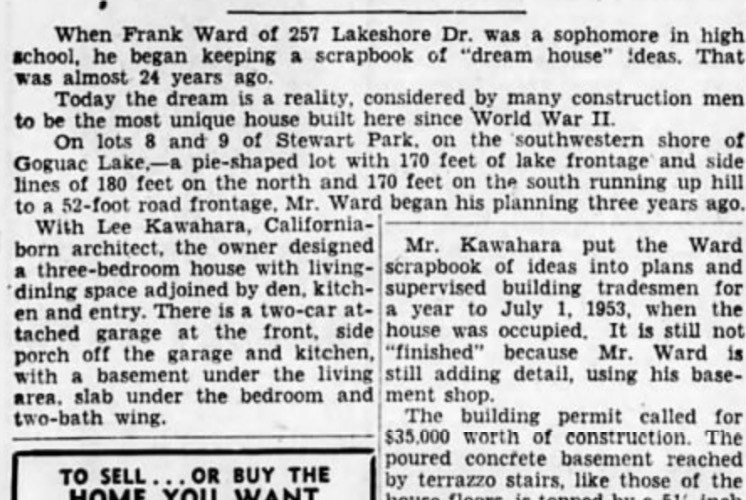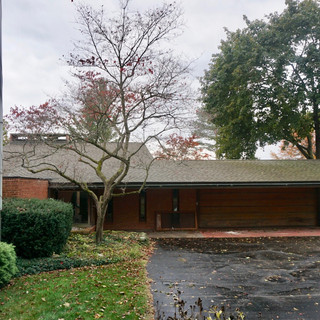Kawahara / Ward House Destruction, Battle Creek, MI.
- Trystcraft
- Oct 31, 2017
- 3 min read
Updated: Feb 5, 2023
Update - December 1st, 2017: This home has been demolished. There was an auction for miscellaneous items from the home, although many had high reserves and ultimately were not sold. I did manage to buy an original cyprus folding screen from the house at that auction. Another Kawahara owner also secured items and materials from the home. At least something was salvaged from this beautiful property. See below for a photo of the folding screen from the Kawahara house:

Appreciating mid-century modern architecture can be a bittersweet pastime. Discovering fantastic structures in your region is always a delight, however, all too often these remarkable structures are destroyed. That’s the case for this 1952 home in Battle Creek, Michigan.

Known as the Ward House, this structure was designed by Yuzuru “LeRoy” Kawahara. It sits on the edge of Goguac Lake at 257 Lakeshore Drive in Battle Creek. Despite its inclusion on the National Register of Historic Places in 2014, the home is set to be demolished in the coming days (as of writing on October 31st, 2017) and a new home built on the lot.
The home was built specifically for Fred Ward, who served as the Civil Defense Director for Battle Creek, Michigan. When Ward served in the military, one of his assignments was to evaluate the structures that withstood nuclear devastation in places like Hiroshima and Nagasaki. It’s no surprise, then, that his home in Battle Creek was heavily fortified. The home features an incredibly secure fallout shelter, which was accessible via a secret door. The shelter was even kept off the home’s plans for further privacy and security!
Slideshow of images and text from a March 14th, 1954, Battle Creek Enquirer article on the house:

The Architect: Yuzuru "LeRoy" Kawahara (1924-2004)
Kawahara was an architect who first fell in love with Frank Lloyd Wright’s work as a high school student in Alviso, California. In World War II, Kawahara was confined in a Japanese-American internment camp in Wyoming and later sent to work as a kitchen helper in a Milwaukee seminary. Kawahara visited Taliesin, Wisconsin, unannounced from Milwaukee to ask Wright about how he could work towards becoming a Taliesin Fellow. Wright accepted Kawahara on the spot, and he began a fellowship in the spring of 1944.
After a brief period in the military, Kawahara went on to repair some of the Frank Lloyd Wright structures on the Florida Southern College campus in Lakeland, Florida. He also worked under Alfred Browning Parker, helped construct the Midway Barn in Taliesin, worked on the model for the Guggenheim and then worked alongside architect Will Willsey in Southwest Michigan.
Photo: Battle Creek Enquirer 11/12/50
Kawahara returned to California and designed many large-scale and commercial buildings, but the only proven residence he ever completed was the Ward House in Battle Creek. (EDIT: another Kawahara designed residence in Battle Creek can be seen here ) That the home could be destroyed in a matter of days is truly a shame, but it is unfortunately increasingly the norm.
Gallery of photos taken 3 days pre-demolition 10/30/2017:
National Register of Historic Places document:
Property Listing:
If you'd like to read about one of Michigan's best mid century architects, please check out my book on Norman Carver Jr.:
If you're interested in more mid-century modern architecture, we've got you covered! Check out some of our photos and blog posts of all the following landmarks:










































































Comments